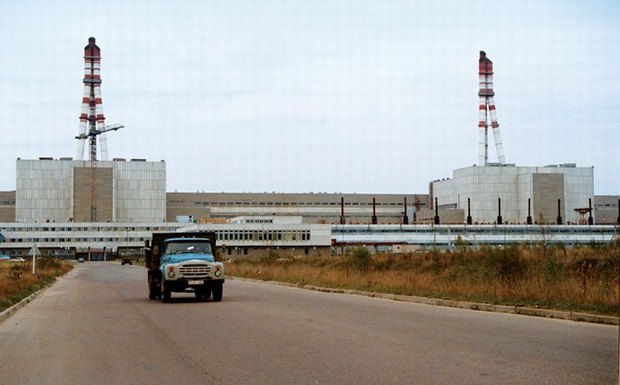
The Ignalia nuclear power plant in the early 1990s. Photo: SCANPIX
In Estonia 60% of primary energy resources are local, mainly oil shale, wood and peat. In Latvia and Lithuania the situation is the opposite where respectively 70% and nearly 90% of these countries' primary energy resources are imported. Major imported resources include natural gas and oil products. In addition nuclear fuel is also imported from Russia for the one remaining unit at the Ignalina nuclear power plant in Lithuania.
In fact more than 40% of all energy production in Lithuania is nuclear. In Latvia, on the other hand more than 70% of energy production is hydro-based, while in Estonia almost 100% of energy production is thermal.
Lithuania has an oil refinery with a capacity of 10 million tons per year. The country sells its products across all three Baltic countries as well as to Western Europe. Latvia possesses a well developed infrastructure for oil and oil products transit and export: pipelines, railroads and oil reloading terminals in the port of Ventspils. Its capacity is more than 30 million tons per year. A second major oil terminal is located in Butinge (Lithuania) – with a capacity of 10 million tons per year. In addition Lithuania and Estonia each have additional oil products export-import capacities of about 7 million tons per year. Only a fraction of those capacities are however utilized.
Natural gas is imported from Russia. The Russian gas giant Gazprom owns stock, approximately 30%, in the gas supply companies of all three countries. Currently the natural gas transmission networks of the Baltic States are not connected to the networks of any other EU member states.
Estonia and Lithuania are currently self-sufficient in electricity generation and maintain significant export potential. Latvia is a net importer mainly from Lithuania and Russia. All three countries, in general, posses a good mix of generation capacities: thermal (oil, shall, heavy oil and natural gas) nuclear, hydro and gradually also a growing share of renewables. In Latvia almost 30% of primary energy production comes from renewable energy sources. The equivalent for Estonia is 12 percent and for Lithuania less than 8 %. The majority of thermal plants are however older than 30 years.
All three countries have very strong internal electricity network inter-connections with their neighbours to the East. Each country can import almost 100% of their internal electricity demand from their closest neighbours. The first 350 MW inter-connector between Estonia and Finland, commissioned in December 2006, was jointly financed by the three Baltic countries. The inter-connector between Lithuania and Poland is on the EU priority projects list with strong political support in both countries and is expected to be implemented by 2012. In addition, it is expected that an inter-connector between Sweden and Lithuania will be constructed at about the same time.
The Baltic States are also connected by cross-country pipelines for natural gas transportation while Latvia has a large underground gas storage facility, which after modernisation will render it capable of supplying its neighbours with their necessary seasonal gas reserves. Latvia has very favourable geological conditions for several large underground storage facilities. Total gas consumption in 2006 exceeded 6.0 billion m3.
While the Baltic States have a well developed energy infrastructure, energy consumption per capita and energy efficiency remain low in comparison to other EU countries. By 2006 the total production capacity of the three Baltic countries combined was just over 10 000 MW. Maximum demand, on the other has not exceeded 4 600 MW. For comparison we can note here that Denmark alone has a production capacity of almost 13 000 MW. The population of Denmark is almost 5.5 million as compared to the 7.2 million total of the three Baltic States combined.
By prof. Jurgis Vilemas, Lithuanian Energy Institute